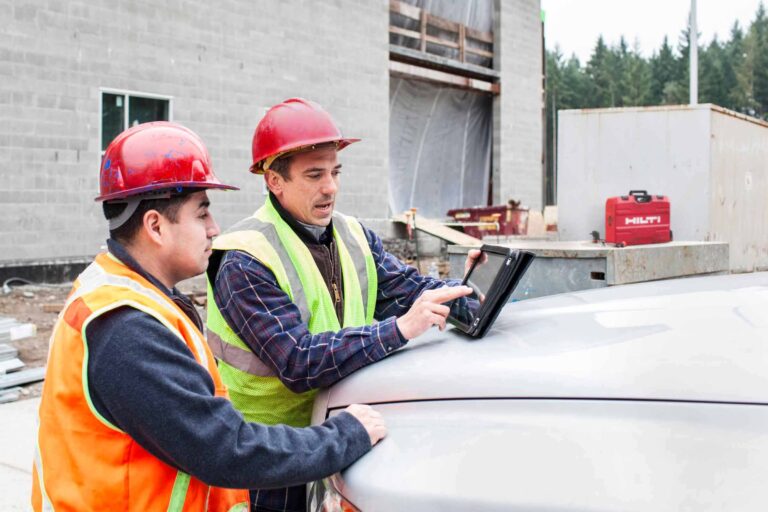
The construction industry is inherently high-risk, with sites presenting numerous hazards that can lead to accidents, injuries, and even fatalities. Ensuring safety on construction sites is a multifaceted challenge that requires diligence, regulatory adherence, and proactive risk management. Traditional methods of incident reporting and compliance monitoring, which often rely on paper-based systems or manual logging, are increasingly proving inadequate in today’s fast-paced, complex construction environments. As a result, construction management software is playing an essential role in enhancing site safety by streamlining incident reporting, ensuring compliance, and facilitating a culture of proactive risk mitigation.
The Need for Effective Incident Reporting
Incident reporting is a fundamental component of workplace safety, allowing companies to track hazards, analyse risks, and implement corrective measures to prevent future occurrences. Historically, paper-based systems or static spreadsheets have been used for this purpose. However, these traditional methods often lead to inefficiencies, inaccuracies, and delays in reporting and addressing safety concerns. A slow response to incidents can increase the likelihood of recurring accidents, legal liabilities, and financial losses for construction firms.
Software solutions specifically designed for incident reporting address these issues by providing a centralized, real-time platform where site workers and managers can log incidents quickly and efficiently. These platforms often include mobile applications, allowing workers to submit reports instantly from the field using their smartphones or tablets. By digitising incident reporting, construction firms can significantly enhance the speed and accuracy of data collection, leading to faster interventions and improved safety outcomes.
Enhancing Compliance with Regulatory Standards
Regulatory compliance in construction safety is essential, with strict guidelines established by governing bodies to protect workers. Compliance with these legal requirements involves meticulous documentation, regular risk assessments, and prompt incident reporting.
Software solutions simplify compliance by automating documentation processes and ensuring that all necessary reports are stored securely and can be easily retrieved during audits or inspections. Features such as automatic alerts and reminders help ensure that safety protocols are followed, while digital checklists enable site managers to perform thorough risk assessments in real time. By maintaining a clear digital record of compliance efforts, construction firms can reduce the risk of regulatory penalties and legal disputes.
Real-Time Data for Proactive Risk Management
One of the most significant advantages of using software for incident reporting and compliance is the ability to analyse real-time data for proactive risk management. Advanced software platforms integrate analytics tools that identify patterns and trends in reported incidents. This data-driven approach enables construction firms to pinpoint recurring safety concerns, assess their root causes, and implement targeted interventions to mitigate risks before they escalate.
Predictive analytics, powered by artificial intelligence (AI) and machine learning, is further revolutionising construction safety. AI-driven software can assess vast amounts of historical data to predict potential hazards based on environmental conditions, worker behaviour, or equipment performance. By leveraging these insights, construction managers can implement preemptive safety measures, such as adjusting work schedules during extreme weather conditions or providing additional training for tasks with high injury rates.
Streamlining Communication and Accountability
Effective communication is crucial for maintaining safety on construction sites. Traditional incident reporting methods often lead to communication gaps between site workers, safety officers, and project managers. Software solutions bridge these gaps by providing real-time updates and ensuring that all stakeholders are informed immediately when an incident occurs.
Cloud-based platforms facilitate seamless communication by allowing safety reports to be accessed from multiple devices in real time. Notifications can be automatically sent to relevant personnel, ensuring that corrective actions are taken promptly. Additionally, digital incident logs create a transparent record of safety-related actions, making it easier to assign accountability and track the effectiveness of implemented measures. By fostering a culture of responsibility and transparency, software solutions contribute to a safer working environment.
Facilitating Employee Training and Engagement
A well-informed workforce is essential for maintaining high safety standards. Construction safety software often includes features that facilitate employee training and engagement, ensuring that workers are equipped with the necessary knowledge to identify and mitigate risks. Digital platforms provide access to safety training materials, interactive modules, and real-time updates on regulatory changes.
Gamification elements, such as quizzes and progress tracking, can enhance engagement and encourage workers to stay updated on safety best practices. Some platforms also allow for the integration of augmented reality (AR) or virtual reality (VR) training simulations, providing a more immersive and effective learning experience. By fostering continuous learning, construction firms can empower their workforce to actively participate in maintaining a safe work environment.
Improving Incident Response and Emergency Management
In the event of an emergency, swift and coordinated action is critical to minimising harm and damage. Software solutions streamline incident response by providing predefined emergency protocols, instant communication channels, and geolocation tracking for injured workers. Emergency response plans can be digitised and stored within the platform, ensuring that all workers have immediate access to crucial information in crisis situations.
Moreover, incident management software enables real-time coordination between on-site teams, medical personnel, and external emergency responders. Some platforms even integrate wearable technology that can detect falls, monitor worker vitals, or send distress signals in case of an accident. These innovations significantly improve response times and outcomes in emergency situations, potentially saving lives.

Reducing Costs Associated with Workplace Incidents
Workplace incidents can result in significant financial burdens for construction firms, including medical expenses, compensation claims, legal fees, and project delays. By investing in software solutions that enhance incident reporting and compliance, construction companies can mitigate these costs by preventing accidents before they occur.
Accurate data tracking allows firms to identify cost-saving opportunities by reducing injury-related downtime and optimising safety resources. Insurance companies may also offer lower premiums to firms that demonstrate a proactive approach to risk management through digital safety tracking. In this way, adopting software not only improves safety but also contributes to overall financial stability and project efficiency.
The integration of software solutions into construction site safety practices is transforming the way incidents are reported and compliance is maintained. By providing real-time data, automating compliance processes, enhancing communication, and enabling proactive risk management, these digital tools are helping construction firms create safer work environments while reducing legal and financial liabilities.
As technology continues to evolve, construction safety software will become even more sophisticated, incorporating AI-driven predictive analytics, wearable technology, and immersive training methods. Companies that embrace these advancements will be better equipped to protect their workers, maintain regulatory compliance, and improve overall project efficiency. Ultimately, the role of software in incident reporting and compliance is not just about meeting legal requirements—it is about fostering a safety-first culture that benefits everyone involved in the construction industry.
In today’s construction landscape, efficiency and accuracy are paramount. Construction management software, like Wunderbuild, revolutionises project handling by centralising tasks, from scheduling and budget management to communication and document control. This integration enhances productivity and ensures projects are completed on time and within budget, making it an essential tool for modern construction professionals. Embrace Wunderbuild here to begin streamlining your construction processes and boost your project’s profitability.




